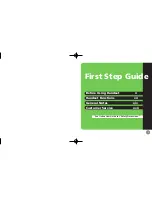
4A. Important Safety Information
99
Im
po
rt
an
t S
afet
y Inf
orma
tion
䢇
It’s best to replace the battery when it no longer provides
acceptable performance. It can be recharged hundreds of
times before it needs replacing.
䢇
Don’t store the battery in high temperature areas for long
periods of time. It’s best to follow these storage rules:
䡲
Less than one month:
-4° F to 140° F (-20° C to 60° C)
䡲
More than one month:
-4° F to 113° F (-20° C to 45° C)
Disposal of Lithium Ion (Li-Ion) Batteries
Do not handle a damaged or leaking Li-Ion battery as you can
be burned.
For safe disposal options of your Li-Ion batteries, contact your
nearest Sprint authorized service center.
Special Note
: Be sure to dispose of your battery properly. In
some areas, the disposal of batteries in household or business
trash may be prohibited.
Radio Frequency (RF) Energy
Understanding How Your Phone Operates
Your phone is basically a radio transmitter and receiver. When
it’s turned on, it receives and transmits radio frequency (RF)
signals. When you use your phone, the system handling your
call controls the power level. This power can range from 0.006
watt to 0.2 watt in digital mode.
Knowing Radio Frequency Safety
The design of your phone complies with updated NCRP
standards described below.
In 1991–92, the Institute of Electrical and Electronics Engineers
(IEEE) and the American National Standards Institute (ANSI)
joined in updating ANSI’s 1982 standard for safety levels with
respect to human exposure to RF signals. More than 120
scientists, engineers and physicians from universities,
government health agencies and industries developed this
updated standard after reviewing the available body of
research. In 1993, the Federal Communications Commission
(FCC) adopted this updated standard in a regulation. In August
1996, the FCC adopted hybrid standard consisting of the
existing ANSI/IEEE standard and the guidelines published by
the National Council of Radiation Protection and
Measurements (NCRP).
Body-Worn Operation
To maintain compliance with FCC RF exposure guidelines, if
you wear a handset on your body, use a Sprint-supplied or
Sprint-approved carrying case, holster or other body-worn
accessory. If you do not use a body-worn accessory, ensure
the antenna is at least
7/16 inch
(
1.5 centimeters
) from your
body when transmitting. Use of non-Sprint-approved
accessories may violate FCC RF exposure guidelines.
For more information about RF exposure, visit the FCC website
at
Содержание SPH-M360
Страница 6: ......
Страница 10: ......
Страница 11: ...Section 1 Getting Started ...
Страница 17: ...Section 2 YourPhone ...
Страница 81: ...Section 3 Sprint Service ...
Страница 103: ...Section 4 Safety and Warranty Information ...
Страница 120: ......
















































